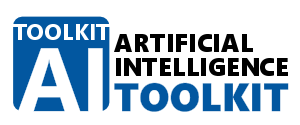- The patient may go home,
- The patient needs to go to the general care hospital floor (GC),
- The patient needs to be transferred to intensive care (IC).
|
L-CORE |
L-SURF |
L-O2 |
L-BP |
SURF-STBL |
CORE-STBL |
BP-STBL |
COMFORT |
DECISION |
|---|---|---|---|---|---|---|---|---|
|
mid |
low |
excellent |
mid |
stable |
stable |
stable |
15 |
GC |
|
mid |
high |
excellent |
high |
stable |
stable |
stable |
10 |
Home |
|
high |
low |
excellent |
high |
stable |
stable |
mod-stable |
10 |
GC |
|
mid |
low |
good |
high |
stable |
unstable |
mod-stable |
15 |
GC |
|
mid |
mid |
excellent |
high |
stable |
stable |
stable |
10 |
GC |
|
high |
low |
good |
mid |
stable |
stable |
unstable |
15 |
Home |
|
mid |
low |
excellent |
high |
stable |
stable |
mod-stable |
5 |
Home |
|
… |
… |
… |
… |
… |
… |
… |
… |
… |
- L-CORE: the patient's internal temperature: high > 37°, 37° ≥ mid ≥ 36°, low < 36°.
- L-SURF: the patient's surface temperature: high > 36.5°, 35° ≥ mid ≥ 36.5°, low < 35°.
- L-O2: the oxygen saturation: excellent ≥ 98%, 98% > good ≥ 90%, 90% > fair ≥ 80%, poor < 80%.
- L-BP: the last measurement of blood pressure: high > 130/90, 130/90 ≥ mid ≥ 90/70, low < 90/70.
- SURF-STBL: the stability of patient's surface temperature: stable, mod-stable and unstable.
- CORE-STBL: the stability of patient's core temperature: stable, mod-stable and unstable.
- BP-STBL: the stability of patient's blood pressure: stable, mod-stable and unstable.
- COMFORT: the patient's perceived comfort at discharge, measured as an integer between 0 and 20.
- DECISION: the discharge decision: Home: the patient needs to be prepared to go Home, GC: the patient must be sent to the General Care hospital floor. IC: the patient must be sent to Intensive Care.
model:id: 'ID-BBEMTNTNEY'type: FFNN1_Cpath: 'postoperative.sl3'params:- layers:- Linear:- TanHLayer:nodes: 100- Linear:- TanHLayer:nodes: 80- Linear:- TanHLayer:nodes: 40- Linear:- iterations_per_cycle: 1000- num_cycles: 10- step_size: 5e-5- batch_size: 1- optimizer: SGD_ADAM- stop_tolerance: 1e-5- sarah_gamma: 0.125training:- data_id: 'postoperative'- dec_id: 'decision'test:- data_id: 'postoperative'- dec_id: 'decision'input:- data_id: 'po_input_data'- dec_id: 'decision'output:- data_id: 'po_output_data'- col_id: 'decision'
AI Training... (Model ID: ID-BBEMTNTNEY).
0 - training accuracy = 71.11 % (Model ID: ID-BBEMTNTNEY) (training time: 0m 2s ).
1 - training accuracy = 81.11 % (Model ID: ID-BBEMTNTNEY) (training time: 0m 0s ).
2 - training accuracy = 90.00 % (Model ID: ID-BBEMTNTNEY) (training time: 0m 0s ).
3 - training accuracy = 91.11 % (Model ID: ID-BBEMTNTNEY) (training time: 0m 0s ).
4 - training accuracy = 92.22 % (Model ID: ID-BBEMTNTNEY) (training time: 0m 0s ).
5 - training accuracy = 92.22 % (Model ID: ID-BBEMTNTNEY) (training time: 0m 0s ).
6 - training accuracy = 92.22 % (Model ID: ID-BBEMTNTNEY) (training time: 0m 0s ).
7 - training accuracy = 93.33 % (Model ID: ID-BBEMTNTNEY) (training time: 0m 0s ).
8 - training accuracy = 93.33 % (Model ID: ID-BBEMTNTNEY) (training time: 0m 0s ).
9 - training accuracy = 93.33 % (Model ID: ID-BBEMTNTNEY) (training time: 0m 0s ).
10 - training accuracy = 93.33 % (Model ID: ID-BBEMTNTNEY) (training time: 0m 0s ).
The best model is chosen with training accuracy = 93.33 % (Model ID: ID-BBEMTNTNEY).
Performance Evaluation Results
Confusion Matrix [predicted x original] (number of classes: 3):
GC Home IC GC 63 5 0 Home 1 19 0 IC 0 0 2 Accuracy 93.33% Error 6.67% C.Kappa 83.46% GC Home IC Precision 92.65% 95.00% 100.00% Recall 98.44% 79.17% 100.00% FNR 1.56% 20.83% 0.00% F1 95.45% 86.36% 100.00% TNR 80.77% 98.48% 100.00% FPR 19.23% 1.52% 0.00%
References
- The Application of Artificial Intelligence, Zoltan Somogyi.
- Post-Operative Patient Data Set: Sharon Summers, School of Nursing, University of Kansas. Medical Center, Kansas City, KS 66160. Linda Woolery, School of Nursing, University of Missouri, Columbia, MO 65211.
You can download the data here: Post-Operative Patient Care Process Decision AI data set
| Learn about the application of Artificial Intelligence and Machine Learning from the book "The Application of Artificial Intelligence | Step-by-Step Guide from Beginner to Expert", Springer 2020 (~400 pages) (ISBN 978-3-030-60031-0). Unique, understandable view of machine learning using many practical examples. Introduces AI-TOOLKIT, freely available software that allows the reader to test and study the examples in the book. No programming or scripting skills needed! Suitable for self-study by professionals, also useful as a supplementary resource for advanced undergraduate and graduate courses on AI. More information can be found at the Springer website: Springer book: The Application of Artificial Intelligence. |
 |











